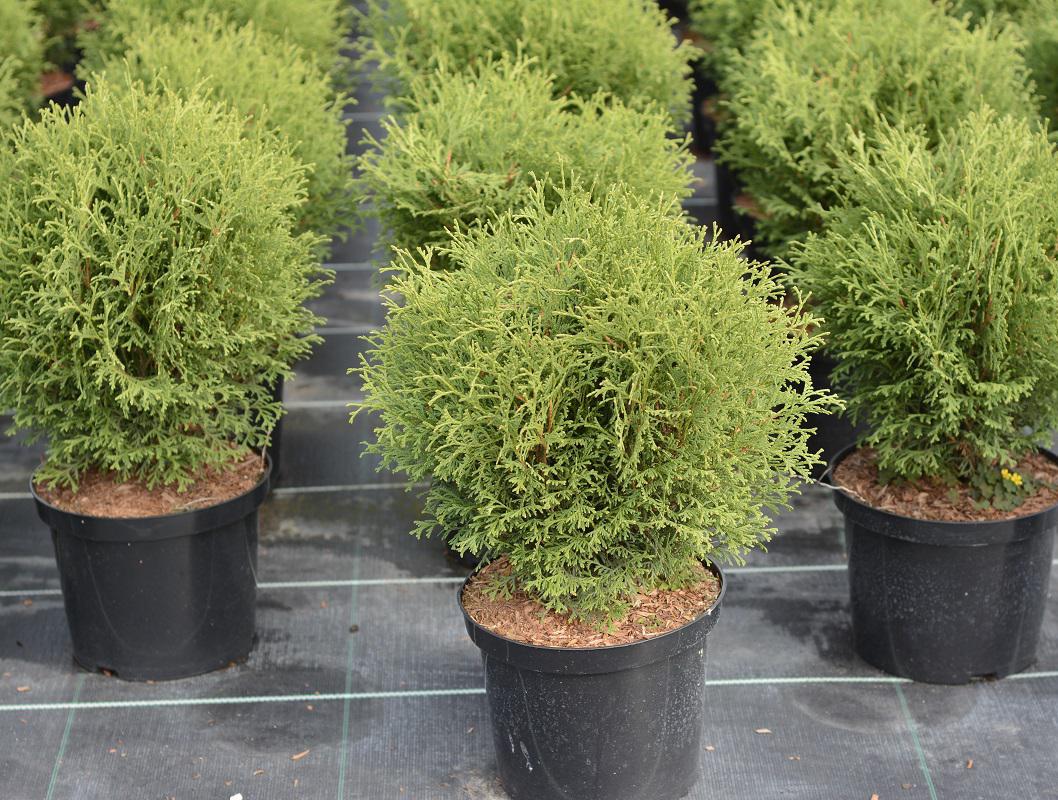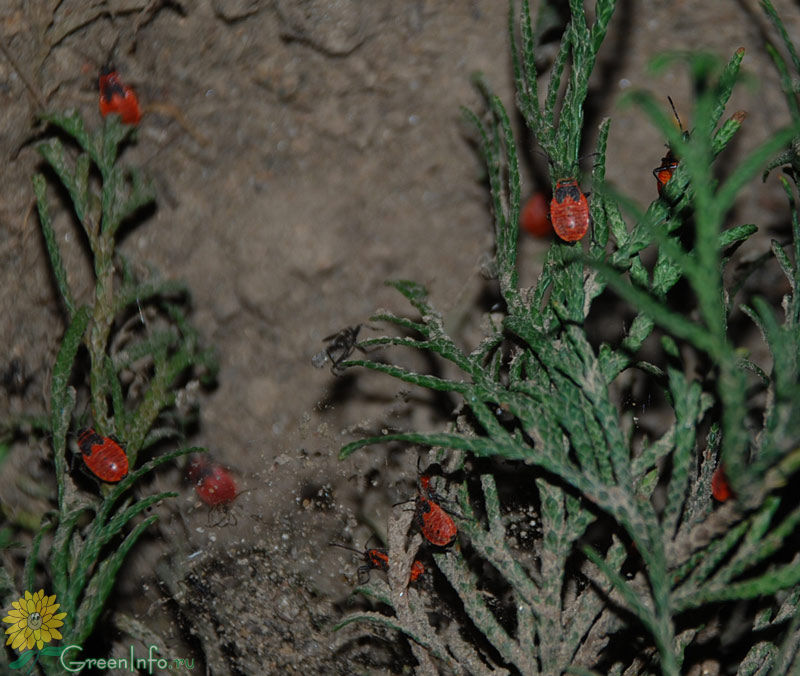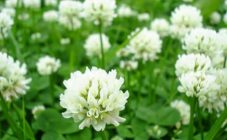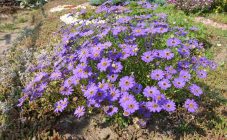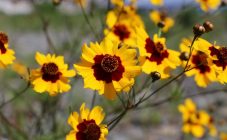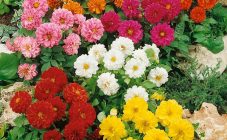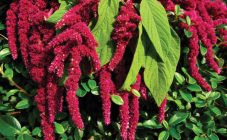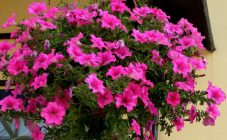Content:
Due to the decorativeness of coniferous crops, as well as the fact that their needles are preserved throughout the year, they occupy one of the leading positions in garden design all over the world. One of the brightest representatives is Tini Tim thuja western, which is an evergreen shrub that decorates the infield.
The ephedra has a dense spherical crown, and the needles stand out with a dark green tint and excellent indicators of frost resistance. With the help of an ornamental plant, you can arrange a border and decorate an alpine slide. If thuja is planted next to perennial tall flowers or ground cover plants, it will only emphasize their beauty and splendor.
History of creation, characteristics and description of the variety
Due to the fact that the western thuja Tiny Tim is unassuming and decorative, breeders continue to work towards obtaining new varieties of evergreen conifers. Today, gardeners and landscape designers are offered a wide selection of plants that differ in shape, size and purpose. As for the Thuja Tini Tim, it was bred in 1955 and immediately entered the group of small, almost dwarf plants. This type of thuja has the following distinctive features:
- thin shoots that branch willingly;
- dark green scaly needles that do not lose their decorative characteristics all year round;
- the dense sphere of the bush at first glance resembles a sphere;
- the growth and development rate is very low.
In most cases, seedlings are chosen for planting on a personal plot, the age of which is 2-4 years. And only after 10 years, the crown begins to form in the thuja. Its height is 30 cm, and its diameter is at least 40 cm. Depending on how the thuja grows, the crown of the plant will gradually expand and reach 1.5 m.
As for an adult thuja, it reaches no more than 1 m in height. The culture belongs to the light-loving species, therefore, it should be planted on a bright land plot, where a drained and nutritious soil is located.
Thuya Tiny Tim is very popular due to its unpretentiousness, since absolutely all types of soil are suitable for growing a plant. But it is worth noting that the best option for ephedra is loose and moderately nutritious soil, which is capable of passing and not accumulating moisture. Thuja Tini Tim has high drought tolerance, but high humidity will also not be an obstacle to its growth.
In the process of growing a crop, it is necessary to provide it with good conditions and care, because only in such conditions will thuja look attractive and grow rapidly. The small size and dense crown contribute to the fact that thuja tolerates cold very well up to 40 degrees below zero.
How to plant thuja Tini Tim correctly
Planting thuja involves the preliminary selection of well-lit areas with cultivated soil and without strong drafts. Dense soil often leads to the fact that the roots do not get enough air, nutrients and water.Dry and excessively damp soil can also be harmful, causing fungal diseases and bacterial rot.
Before planting a Tiny Tim thuja, you need to dig holes - if it is a single shrub, and a trench - if you are planning to create a dense, low-growing curb. The size of the planting pit is directly proportional to the size of the underground part of the ephedra. In order to cover the plant, you need to mix peat and sand with garden soil in a ratio of 1: 1: 2, and then add a complex fertilizer - 50 g for one plant.
For growing seedlings purchased from the nursery, it is necessary to use special containers, thereby protecting their root system. Tuya Tini Tim takes root quite quickly and easily, so planting a plant does not require adherence to any special rules. When self-planting ephedra, attention should be paid to the location of the root system. The roots of the seedling must be carefully laid out on a mound of earth scattered at the bottom of the hole.
The soil must be backfilled so that the root collar is above the ground. If you ignore this remark, you may encounter such problems:
- violation of the development of the ephedra;
- a sharp slowdown in growth;
- skeletal branches and the lower part of the trunk may rot;
- in some cases, plant death is possible.
After the holes have been covered with earth, it must be tamped and watered with a sufficient amount of water. The method of thick mulching using sawdust or peat can contribute to maintaining moisture. If necessary, the layer can be periodically replenished and restored.
Ephedra care recommendations
Thuja care after planting should be regular and consist of several stages. As for the soil under the evergreen conifer, you need it:
- weed;
- water systematically;
- loosen (the length of the deepening should be no more than 10 cm).
When watering thuja, you need to make sure that the water gets not only to the root system, but also to the crown of the shrub. Moisture is necessary to maintain the good shape of the thuja - the needles become bright, shiny, and the branches acquire elasticity. Every week, at least 10 liters of water should be allocated for watering the thuja, but if the summer is very hot, these 10 liters will be needed by the culture every three to four days.
During the first 2-3 years of growth and development of thuja, it will not need feeding. The plant can be fed in the fourth year by applying mineral and organic fertilizers - per 1 sq. m 100 g of substance. After the top dressing has been applied, the Thuja Tini Tim will become more magnificent, and its growth will increase significantly. Conifers need to be fertilized no more than 2 times at the beginning of the season, using ordinary compost for this.
Pest and disease control
Due to excessive fertilization, the root system of the thuja can get burned. Because of this, the crown of the bush will turn yellow and dry out. A yellow tint often appears due to the fact that the coniferous shrub was struck by the thuja aphid, damaging the lower part of the seedlings. If parasites are found, the plant must be immediately treated with Karbofos.
The second dangerous pest is the speckled moth, the size of which is 4 mm. But, despite its small size, it can cause significant harm to thuja. The needles become brown after the thuja motley begins to hit it. Partial dying off of the top of the seedlings is also possible.For preventive purposes, it is necessary to spray thuja with agents that include pyrethroids. The best time to process the plant is the second half of July.
An excess of moisture when growing thuja very often leads to the development of late blight, which affects the root system of the shrub, and then the top layer. The characteristic signs of this disease: the needles of the bush becomes gray, the structure of the trunk is soft, and the thuja itself becomes lethargic. The root system of the plant begins to smell like rot.
Experienced gardeners say that it is very difficult to cure late blight and it is much easier to prevent its development. To do this, the soil near the trunk circle must be loosened and treated with a fungicide. If the disease still affects the thuja, the shrub must be burned, and then the soil must be changed.
In the circles of landscape designers, Thuja Tini Tim gained great fame due to the constant color of the needles, compactness and not very rapid development rate. A group or single planting of a plant is used to decorate a low curb, functional areas, and also to decorate garden paths.
Due to the fact that the culture is very unpretentious and resistant to negative external factors of influence (harmful emissions from enterprises or transport), it can be grown in urban conditions or in a suburban cottage village as a perennial gardener.


